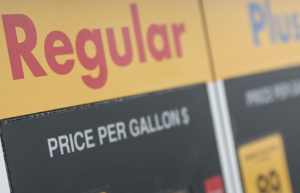The national average for a gallon of gas is $3.40, rising just two cents in the last week, the smallest weekly increase in a month. Kentucky gas prices are following suit, with the average for the Commonwealth rising only a penny on the week.
News that Iranian oil, which has not been sold globally in large quantities since 2018, may return to the world market and an OPEC+ meeting scheduled for Thursday via videoconference, is increasing market volatility ― but also slowing gas price increases, at least for now.
“We have finally seen a little dip in domestic demand for gasoline, which may signal that the typical post-Labor Day drop off was just a bit delayed this year,” says Lori Weaver Hawkins, public and government affairs manager, AAA Blue Grass. “And, if the recent steady increase in crude oil prices takes a breather too, consumers will likely see smaller price hikes at the pump.”

In Kentucky, the escalation of gas prices seems to have slowed a bit, with the average increasing just a penny on the week to rest at $3.11. Gas prices have risen about 20 cents on average in the Commonwealth over the past month and $1.16 on the year.
Even though gas prices did not increase as much on the week, pump prices will likely continue to rise as long as the price of crude remains above $80 per barrel.
According to new data from the Energy Information Administration (EIA), total domestic gasoline stocks decreased by 2 million barrels to 215.7 million barrels last week. Gasoline demand also fell from 9.63 million barrels per day to 9.32 million barrels per day. The drop in demand has helped slow price increases, but elevated crude prices continue to put upward market pressure on pump prices.
The national average of $3.40 is 21 cents more than a month ago, $1.27 more than a year ago, and 79 cents more than in 2019.
Price fluctuations vary across the Commonwealth
Gas prices across Kentucky continued to fluctuate over the past week, with some metro areas seeing prices trend lower. In those areas where prices rose, the climb was less dramatic than in previous weeks.
In Lexington, the average gas price fell another 2 cents to land at $3.07. The current average for Lexington is 11 cents higher than a month ago and up $1.16 from a year ago.
Louisville remains the high spot for gas in the commonwealth at $3.16, but that’s a drop of 4 cents compared to last week. Close on its heels are Bowling Green, which rose 4 cents on the week to land at $3.14, Huntington-Ashland (KY only) down 2 cents at $3.13 and Hopkinsville up a penny at $3.12.
Henderson is the low spot in Kentucky, falling 11 cents on the week, all the way down to $2.87.

Trailing Henderson, but still below the statewide average, are Elizabethtown-Fort Knox metro, up 4 cents to land at $3.03, and Covington down 3 cents to $3.06.
For those traveling around the region, Kentucky’s $3.11 average is 6 cents lower than Ohio’s average of $3.17, 19 cents lower than Indiana’s average of $3.30, and 5 cents lower than Tennessee’s $3.16.
Prices at the pump in Kentucky are averaging 22 cents less than in West Virginia, 19 cents less than Virginia, 45 cents less than Illinois and 3 cents less than Missouri.
The highest spot in the nation today is California at $4.61, while the lowest average gas price can be found in Oklahoma at $3.01.
Quick Stats
The nation’s top 10 largest monthly increases: Alabama (+33 cents), Connecticut (+32 cents), Washington, D.C. (+31 cents), Arizona (+31 cents), Rhode Island (+30 cents), New Hampshire (+29 cents), Virginia (+29 cents), Vermont (+29 cents), Massachusetts (+29 cents) and Delaware (+28 cents).
The nation’s top 10 most expensive markets: California ($4.60), Hawaii ($4.30), Nevada ($3.94), Washington ($3.87), Oregon ($3.78), Utah ($3.73), Alaska ($3.72), Idaho ($3.70), Washington, D.C. ($3.59) and Pennsylvania ($3.57).
Oil Market Dynamics
At the close of Friday’s formal trading session, WTI increased by 76 cents to settle at $83.57. Crude prices gained on the day due to market expectations that the Organization of the Petroleum Exporting Countries, Russia and their allies, known as OPEC+, will maintain production cuts during their meeting this week. However, crude prices took a slight step back on the week after EIA reported that total domestic crude supply increased by 4.3 million bbl to 430.8 million bbl. If EIA’s next report shows another inventory increase, crude prices could decline this week.
AAA






















